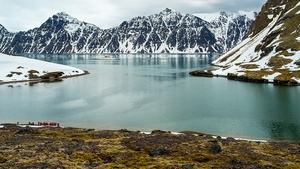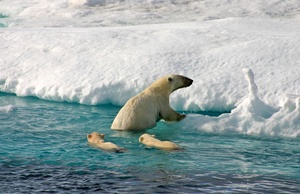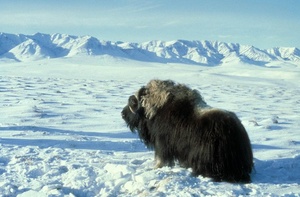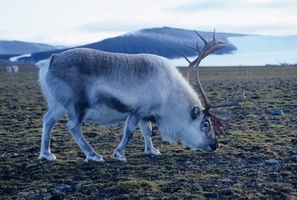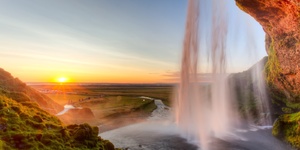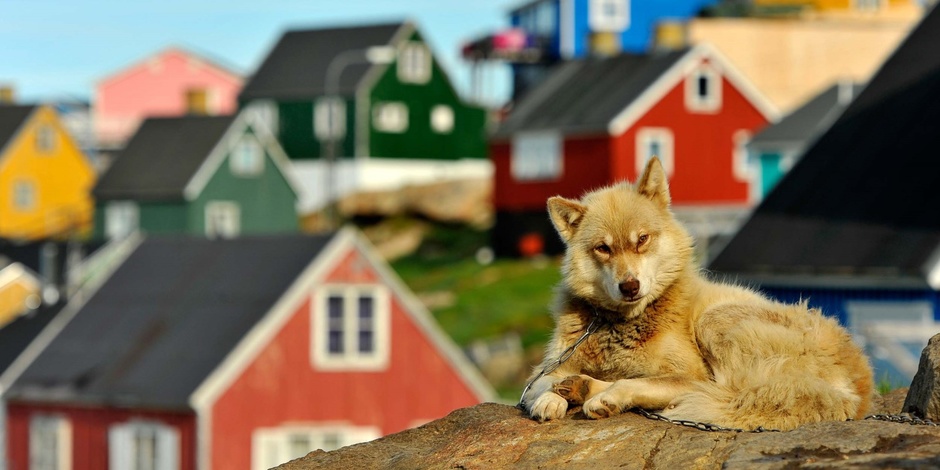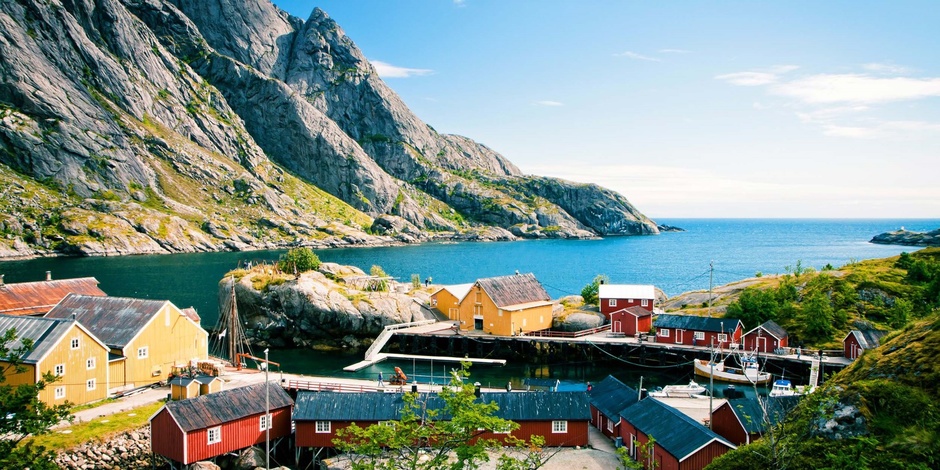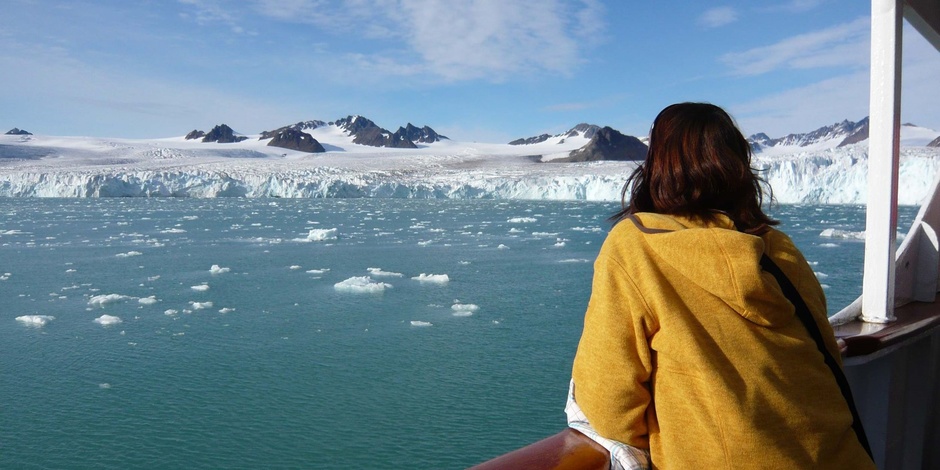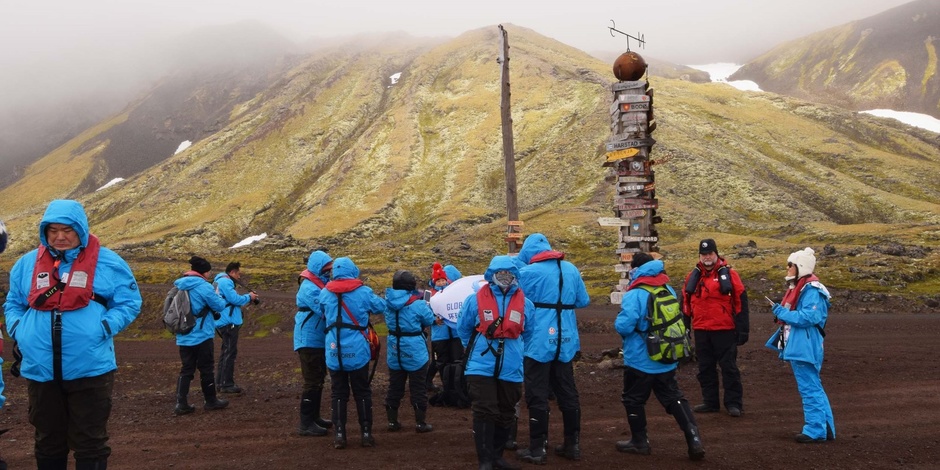Rates
Dates
Rates:
PER PERSON:
$12,990.00 (Cat. G)
$ 8,990.00 (Cat. F)
$11,890.00 (Cat. E)
$10,790.00 (Cat. D)
$12,990.00 (Cat. C)
$14,990.00 (Cat. B)
$15,990.00 (Cat. A)
$17,990.00 (Freydis Suite)
$21,590.00 (Brynhilde Suite)
Category G - Single Stateroom Porthole 14 sq. m
Category F - Triple Stateroom Porthole 22 sq. m
Category E - French Balcony Suite 16 sq. m
Category D - Balcony Stateroom 22 sq. m
Category C - Balcony Stateroom 24 sq. m
Category B2 - Balcony Suite 28 sq. m
Category B1 - Balcony Suite 35 sq. m
Category A - Junior Suite 42 sq. m
Premium Suite - Premium Suite 45 sq. m
Dates:
Cabin Description:
Included:
- 11-day, 10-night cruise on Ocean Albatros in a shared outside double room with a private bathroom in the category chosen
- Flights: Oslo-Longyearbyen-Oslo
- Local transport in Longyearbyen on days 1 and 11
- English-speaking expedition staff
- Guided walks with the expedition team
- Nature hikes and Zodiac cruises per itinerary
- Information briefings and lectures by the expedition team
- Special photo workshop
- Full board on the ship
- Free coffee, tea, and afternoon snacks on the ship
- Dinner drink package
- Welcome and farewell cocktails
- Taxes, tariffs, and landing fees
- Digital visual journal link after the voyage, including voyage log, gallery, species list, and more
Optional Services:
Kayaking
Itinerary:
Board your flight in Norway and arrive in Longyearbyen, Svalbard - the world's northernmost... everything! This remarkable little city is not only the northernmost town in the world (if one excludes the tiny research community of Ny-Ålesund, slightly further north on Svalbard), but also hosts the world's northernmost civilian airport, schools, bank and supermarket. The town's rugged frontier edge belies a core of warm Nordic hospitality and coziness - hyggligt, as we say in Denmark!
Immediately after landing in Longyearbyen, you find yourself in a different world. The chilly Arctic breeze can be felt as soon as you step onto the tarmac, and the famous signpost outside the terminal reminds visitors how far north they really are; as well as to keep watch for bears! The snow-capped mountain Hjorthfjellet looms over the airport on the far side of Adventfjorden, and off in the distance can be seen the saw-toothed peaks and languid glaciers of northern Spitzbergen.
After arrival, you will board the awaiting Ocean Albatros. After our mandatory safety briefing and lifeboat drill, head onto the outer decks to enjoy a glass of champagne while watching your expedition vessel leave civilisation behind... And set a course for adventure!
During the night, your expedition vessel will reposition away from the last vestiges of civilisation on Svalbard, and head into the wilderless of this storied land. Roughly triangular, the southern half of Svalbard comprised the lower half of the island of Spitsbergen, the island of Edgeøya, and countless fjords, islets and skerries, all of which beckon exploration.
At a first glance, this region may seem barren and lifeless. But look closer and the exact opposite it true - saxifrages, Svalbard poppies and other tundra plants defy the brutal weather, their jewel-like flowers reaching for the weak Arctic sunlight. Tiny calico snow buntings flit between crags, while perfectly camouflaged purple sandpipers scamper along the shore. Look higher up on the vegetated slopes, and there - greyish white 'boulders' move and resolve themselves into sheep-sized reindeer: the unique subspecies native to Svalbard. A flash of bluish-black, and the screeches of nearby birds herald the arrival of the Arctic fox, the only native land predator on Svalbard (the polar bear being classified as a marine mammal).
Life on Svalbard relies on the sea - even the few land mammals such as the reindeer and Arctic foxes rely on the moisture brought by the frigid Arctic waters, and it is in the marine environment where Svalbard's biodiversity is richest. Walrus haul their vast bodies onto flat beaches to rest, where they snuggle together for warmth and protection. Belugas frolic in vast pods in the waters off the coast, harvesting fish and crustaceans from the seabed, and further offshore the vast gentle baleen whales feast upon copepods and small fish.
Southern Svalbard is arguably the first part of the island to be exploited by humans. On Edgeøya, vast piles of snow-bleached bones bear witness to the systematic and industrial-scale slaughter of walrus an beluga in their thousands. The earliest humans on the islands (mainly English and Dutch whalers and Russian Pomor trappers) had little regard for conservation, seeking only profit, a situation which continued well into the 19th century. Thankfully all wildlife on Svalbard is now protected by law, and vast tracts of the archipelago are designated as nature reserves and National Parks - some of the largest and richest in the world!
The exact landing sites we will visit in the south of Svalbard will be determined by wind, sea and ice conditions, which can wildly vary day to day and year to year; this far north, all human activity is subject to the whims of Mother Nature. Possibilities to explore on south Spitzbergen include the fjord systems of Bellsund and Hornsund, where birds cluster together on high cliffs and reindeer graze on the fertile slopes below while icebergs drift by from the various large glaciers in the area. Further east on Edgeøya, sites include the walrus colonies of Andréetangen and Kapp Lee, and the spectacular raised shorelines and bird colonies of Sundneset.
WE EXPLORE A COAL MINE AND DELVE INTO THE HISTORY OF THIS FAR NORTH TOWN
Pylons that once carried buckets of coal, and an increase in the number of huts along the shoreline herald Ocean Albatros' return to the town of Longyearbyen. Around two thousand hardy souls call this unique settlement home, and many are fiercely devoted to their high Arctic home. It is very easy to see why!
Longyearbyen occupies a small valley at the head of Adventfjorden - a small inlet off Isfjorden (the vast fjord which bisects the island of Spitzbergen). The town was originally established as a mining settlement in the late 1800s, and is named after John Longyear - an American prospector whose company began exploiting the black gold beneath the city in 1906.
One small mine produces coal which is used to provide electricity for the town - changing market conditions and safety concerns meant that mining has now almost ceased in Longyearbyen. The mining heritage of the town remains strong however, and several unique traditions developed from this history - removing one's shoes is customary upon entering many shops and cafes in the town for example, and mining ruins can be observed throughout the surrounding hills. Longyearbyen has since reinvented itself as a hub for high Arctic tourism and research, with several hotels and the University Centre in Svalbard established. The modern airport was opened in 1975, allowing year-round access for this formerly isolated community.
After our breakfast on the ship we set off to learn more about Longyearbyen's exciting mining history as we enter now inactive Mine number 3. As we walk through the defunct mine, we can get a closer look at some of the machinery and equipment left behind as production stopped. Certain techniques apply to mines that are this high into the mountains, which we will be introduced to by our guides. We end our tour in the main tunnel that was excavated back in the 1970's. Nb. dress warm for the trip, as the mine is quite cold. Helmets and headlamps are handed out.
Back on our ship we will follow up on our experiences and after lunch it is time to explore the city further.
Longyearbyen has several unique laws as a result of it's high Arctic environment. Due to the delicate environment of the islands, nobody is permitted to own a cat for example, as a family pet could still decimate local bird populations. Anyone leaving the boundary of the town is required by law to carry a firearm to protect themselves from polar bears. Despite the challenging environment of the town, it is a bustling thriving community which offers excellent amenities to visitors. Visit the peerless Svalbard Museum and see relics of the whaling era, perfectly preserved in the frigid permafrost, alongside exhibits on the natural history of this remarkable archipelago. Shop for memories in the many excellent boutiques of the town, selling locally produced souvenirs, artworks and homewares, or simply relax on a sunny cafe terrace and watch this remarkable little town in action.
THE WILDERNESS OF THE HIGH ARCTIC
One of the largest protected wilderness areas in Europe, North West Svalbard was declared a national park in 1973. The area is famed for its history, which documents some of the earliest human arrivals on Svalbard. While Norse explorers may have sighted these icy shores during the Viking Age, the first definite arrival was the expedition of William Barents, the legendary Dutch explorer for whom the Barents Sea is named. While now protected from human distruption, when Barents arrived in 1596, he noted the vast numbers of whales and seals which were soon prey to English and Dutch whalers, who arrived within a decade of Barents to pillage the area's wildlife. The area occupied the triple point between land, sea and ice, and as such was the perfect location from which to harvest the gentle giants of the oceans. Sites used to dismember whale carcasses and render them for their precious oil include the Dutch settlement of Smeerenburg, where the remains of 16th Century blubber ovens and building foundations can still be seen. Other sites such as nearby Ytre Norskøya record the darker side of this industrialised slaughter, where hundreds of young men who hoped to make their fortunes are buried thousands of miles from home.
Today, all that remains from this period of history are bones and the scant remnants of human habitation. Slowly reclaimed by creeping Arctic nature, the region is now a anture lovers paradise. Tiny Arctic poppies and purple saxifrage defy the brutal conditions to flower in the brief summer, while geese, eider ducks and other seabirds return to the island to raise their young. Walrus can be found hauled out on beaches, and we must always be on careful lookout for wandering polar bears in this now again wild region.
An icy breeze touches your exposed cheeks. The scent of snow and sea fills your nostrils. Sunlight reflects off the floating ice, illuminating the clouds overhead. Enter an environment like no other, the vast shape-shifting realm of floating ice which crowns our planet. The vast ever-changing ice pack to the north of Svalbard stretches from this already isolated archipelago to the North Pole, and onwards across the Arctic Ocean towards the northern shores of Chukotka and Alaska.
The Arctic ice pack is one of Earth's largest habitats, although unlike most it varies hugely year on year, expanding in winter and retreating in summer. The location of the sea ice around Svalbard can also vary wildly - however, with two full days planned to explore this icy wilderness, we maximise our chances of finding and exploring this impossibly remote environment. At first glance, this stark white wilderness seems barren, empty and lifeless. This icy wilderness holds on to its mysteries, and of course wildlife sightings are at the whims of Mother NatureWith a little perseverance however, the ice reveals its secrets.
As Ocean Albatros pushes through the narrow channels in the ice, tiny cod-like fish can be seen silhouetted against the ice in the clear water. Kittiwakes and Gloucous Gulls follow the vessel as it distrubs the water. Further out on the ice, black dots appear; moving closer, they resolve into seals, basking on the ice. A plume of water reflects the sunshine - a pod of belugas perhaps, or maybe even the vast gentle bowhead whale crushing this ice from below as its massive body surfaces. There, beyond the banks of rucked ice - a yellowish dot pads along the ice, the head swinging from side to side: the King of the Arctic continues his never-ending quest for prey. This is the kingdom of the polar bear, the vast icy wastes at the top of the world - a remarkable place which is the goal of this expedition.
As we retreat from the icy wastes of the north, we return to the (relatively) hospitable shores of northwest Spitzbergen. Once the haunt of whalers and sealers, these shores have an equally fascinating role in the modern history of Svalbard.
These islands' geographical location has made them the staging post for exploratory and scientific expeditions for centuries - a proud legacy which continues to this day. The names of these pioneers and their ships still loom large in world history - the Nobile, the Norge and the Fram, Amundsen, Nansen and Nordenskiöld, all legends of polar exploration who passed this lonely outpost seeking to push the boundaries of humanity. Nearby stands the tiny settlement of Ny-Ålesund, the world's northernmost community, once a coal mining town, Ny-Ålesund is today a research settlement, hosting permanent research stations from 12 countries. Where whalers once slaughtered, now researchers study in an effort to conserve the precious biodiversity of the region.
Look closely and signs of this courageous history can still be seen. On Danskøya, rusting remains hint at the hot air balloon and airship attempts at the pole by Salomon Andrée and Walter Wellman. In Ny-Ålesund, the airship mast to which Amundsen's Norge was moored still stands proud over the barren landscape. Follow in the footsteps of the explorers of yesteryear and learn how researchers persevere to preserve this high Arctic paradise.
Explore the fascinating little research town of Ny-Ålesund as Ocean Albatros pulls into Kongsfjorden, and see modern Arctic scientists in action in the northernmost settlement on Earth.
During the evening, the Ocean Albatros will reposition to return to the port of Longyearbyen. Even this small town will feel like a metropolis after days of isolation in the sea ice!
After enjoying exploring Longyearbyen, return to Svalbard Airport and join your flight back to the Norwegian mainland- with memories to last a lifetime.
Notes:
Excluded:
- Extra excursions and activities not mentioned in the itinerary
- Single room supplement and cabin upgrades
- Meals not on board the ship
- Beverages (other than coffee and tea and dinner-drink package)
- Tips for the crew (we recommend USD 16 per person per day)
- Personal expenses
- Travel, cancellation, and senior insurance
- Anything not mentioned under ’Inclusions’
 East West Tours
East West Tours Nordic Saga Tours
Nordic Saga Tours

 Send review
Send review Print
Print 
